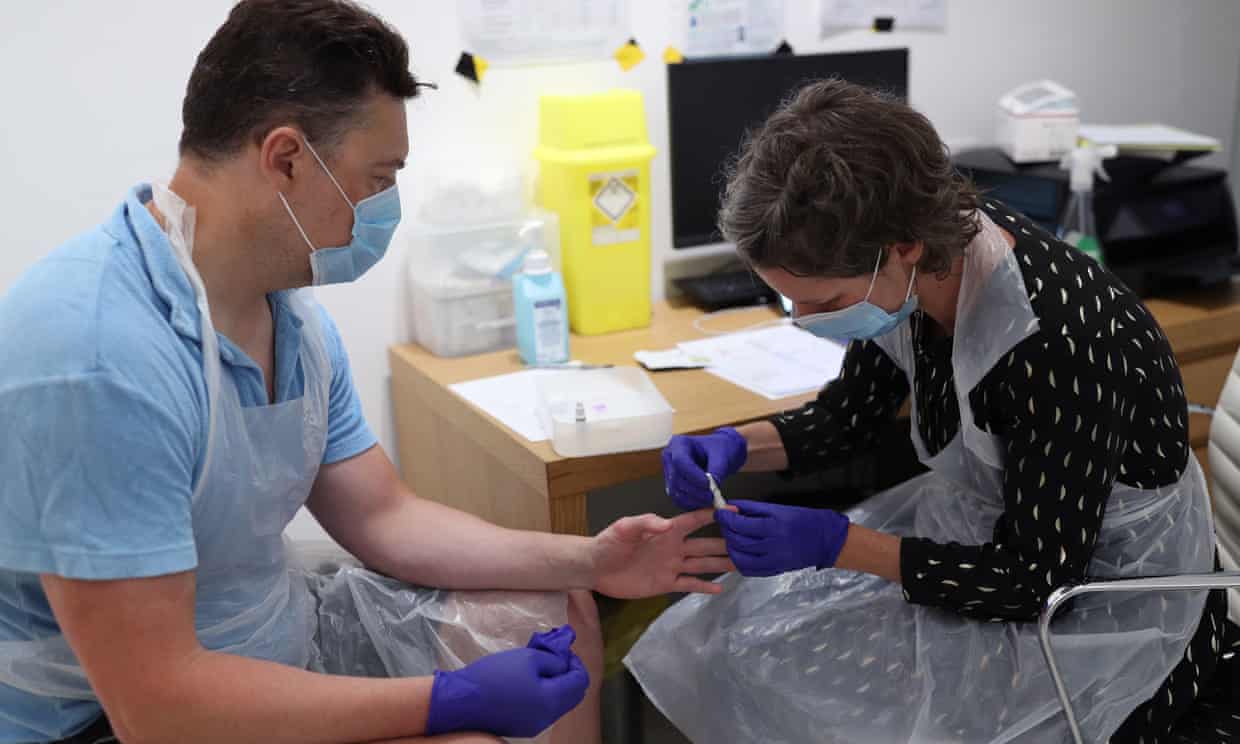
Coronavirus outbreak
'Something to hide': UK government accused over Covid-19 tests
Number of people tested for coronavirus for seventh day running has not been disclosed
by Hannah Devlin, Peter WalkerThe government has failed to disclose the number of people tested for Covid-19 for the seventh day running, prompting criticism from senior scientists who said this risked a perception that there is “something to hide”.
On Friday, figures showed that less than 131,500 daily tests were carried out the previous day. No 10 insisted that it was “on target” to hit 200,000 daily tests by 1 June, as promised by health secretary Matt Hancock.
However, no figure for the total number of people tested was provided – and hasn’t been for a week – which experts said makes it impossible to judge whether an adequate regime is in place to support the newly launched test-and-trace system.
Paul Hunter, professor of medicine at the University of East Anglia, said: “Whether or not the Department of Health is trying to hide these figures ... not making them publicly available could be perceived as that.
“If the government is setting targets that it’s then going to judge itself by, the results should be publicly available so that people outside the small group of advisers to the government are able to judge them independently. It does feel that the openness is not there.”
Prof Allyson Pollock, director of the Newcastle University Centre for Excellence in Regulatory Science, said the lack of transparency was concerning at a critical time when testing was required to ensure restrictions can be eased safely without triggering a resurgence of infections.
“I have no idea whether we’ve got adequate testing [for track and trace] because we just don’t have enough information,” she said. “We should know how many people have been tested, why they’ve been tested, where they’ve been tested, who has done the test, the test results. We haven’t got those figures.”
The latest figures provide the number of people tested in Pillar 1 (people in hospital and health and care workers), but not for Pillar 2 (tests for the wider population carried out at drive-through centres or through home testing) or overall figures. These numbers were last made available on 22 May.
The Department of Health website states: “Reporting on the number of people tested has been temporarily paused to ensure consistent reporting across all pillars.”
The most recent available figures for Pillar 2 show that there had been around 1.6 million tests to date, but just 1.1 million people tested in this category. The gap of roughly 500,000 is understood to be accounted for by people who have had retests and because tests mailed out for home testing and to satellite labs are only counted as “people tested” once they return to the system.
Only a “small percentage” of people in Pillar 2 have retests, according to the Department of Health, suggesting that hundreds of thousands of tests mailed out to homes and satellite labs – potentially more than a third of those mailed out – had not returned to the system by last week.
“If this service is working properly we need to know that the tests are being done and not just disappearing into the postal service never to be seen again,” said Hunter.
The Department of Health declined to say how many tests have been mailed out, but have not returned to the system or are awaiting use in satellite laboratories.